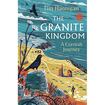
In a cross-country walk through inland Cornwall, Tim Hannigan avoids places such as the celebrated coastal path that normally hogs the limelight and assembles a literary journey through the cultural history of the landscape. Beginning at the river Tamar and ending at Penwith, known to some as Cornwall’s Connemara, he dextrously embraces wide parameters of archaeology, geology, folklore and topography, unravelling the heritage of the fishing, tin and copper mining industries, mixing it with contemporary social reality.
Hostile opinions on the landscape by earlier writers and travellers are invoked. The artist William Gilpin thought it desolate and dreary, Walter de la Mare found the moorland melancholic, John Heath-Stubbs described the area west of St Ives as ‘a hideous and a wicked country’. Even one of Cornwall’s most ardent admirers, John Betjeman, who holidayed in a cottage at Trebetherick, detected something horrible and mysterious near Padstow when the mist rolled in.
Hannigan finds this aesthetic distaste “a visceral reaction to an utterly alien landscape”. But he too does not always feel comfortable as he follows quiet twisted lanes, battles through thickets and hedges, and crosses working farmyards, calling the wilderness of Bodmin Moor “imaginatively compelling”.
Although he discovers a homeliness in the presence of granite, which becomes his lodestone, he is more at ease wild camping on grey bedrock outcrops or sleeping on a beach, than staying in hostels. His father fished off Newlyn in the 1970s and the narrative is interspersed with humorous childhood flashbacks featuring stories of plundered shipwrecks and camping with his parents.
READ MORE
The author now divides his time between Cornwall and Connacht, and here draws comparisons between them. He detects a remarkable similarity between Tintagel and Knock, Co Mayo, the only difference being that the trinkets in the windows are not chalices, dreamcatchers and porcelain dragons, but votive candles, holy water bottles and statues of Our Lady.
The best kind of traveller, Hannigan is brimful of boundless curiosity and enjoys an anti-tourism approach. At certain stages his meandering route provides a comforting solidarity, but he is frustrated by the lack of public rights of way, dead-ends, waterlogged fields and hedges with no gate. In a beguiling book that throbs with passion, Hannigan has captured a portrait of a hidden and often mysterious Cornwall, conveying it with style, tenderness and passion.
- Paul Clements’s latest book is Jan Morris: Life from Both Sides: A Biography (Scribe).











